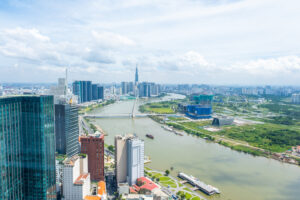
The differences in healthcare between Japan and ASEAN countries can be quite significant, with various aspects such as insurance systems, consultation mechanisms, medical institutions, healthcare delivery, quality of care, and hospitality differing notably. This article, based on my experiences traveling across East Asia and 13 ASEAN countries, provides an overview of these differences. It's important to note that some of the content is based on observations rather than data and might be somewhat general.
Japan is unique in Asia with its national health insurance system, where public insurance and out-of-pocket payments cover medical expenses. In many ASEAN countries, however, national health insurance systems are not as comprehensive, and a combination of public and private insurance, along with out-of-pocket payments for non-insured treatments, is common. The type of public insurance varies based on the individual's occupation, age, and other factors, and in some countries, public insurance cannot be used at private medical institutions.
In terms of consultation mechanisms, many countries have specific designated medical institutions for primary and acute care, unlike Japan's free access system. This highlights the privileges Japanese citizens have regarding healthcare accessibility. Insurance systems are well-structured in Japan, ensuring uniform medical fees across different institutions. In contrast, many citizens in other countries cannot freely choose their desired hospital.
Japanese healthcare facilities include approximately 9,000 hospitals and over 100,000 clinics. Despite having the world’s highest number of beds per 1,000 people and the longest hospital stays, Japan ranks lower in terms of the number of doctors. Many patients are hospitalized, often for extended periods, leading to a situation where many beds are occupied and a significant number of hospitals operate at a loss.
In contrast, many ASEAN countries are adopting the DRG/PPS (Diagnosis Related Group/Prospective Payment System) model, moving away from fee-for-service to a bundled payment approach per hospitalization. Japan uses the DPC/PPS (Diagnosis Procedure Combination/Per-Diem Payment System), which still allows hospitals to receive payments for each day of a patient's stay, contributing to longer hospital stays.
The healthcare quality in ASEAN countries, particularly in Singapore and Thailand, is often comparable to or even surpasses that in Japan. Many doctors in these countries have trained in the West, and their institutions provide high-quality medical services. Despite the high quality of Japanese healthcare, it is perceived that for the wealthy, there is little need to seek treatment in Japan as the quality of care in other countries is sufficient.
In terms of hospitality, top-level hospitals in ASEAN countries often provide services that exceed those in Japan, offering a hotel-like experience during hospital stays. This is even true in countries like Myanmar, where hospitals affiliated with international groups provide outstanding hospitality.
While Japanese healthcare has high potential, structural and cultural factors, along with the non-profit nature of many Japanese hospitals, shape its current state. In contrast, ASEAN countries view healthcare more as a business, with private hospitals playing a significant role.
Japan faces challenges with its aging population and the shift to community-based care. Despite efforts to integrate medical and nursing care services, there are difficulties due to workforce shortages and dependence on doctors for many tasks.
In conclusion, while Japanese healthcare excels in serving the middle class, at the top level, it is considered equivalent or even inferior to the healthcare in ASEAN countries. My aim is to continue understanding the current state of healthcare in Japan, Asia, and ASEAN, identifying issues, and contributing to their resolution both domestically and internationally. However, addressing these structural issues appears challenging. Efforts to facilitate medical exchange between Japan, East Asia, and ASEAN and support activities inspired by international experiences can help address gaps in Japanese healthcare. (Written by: Yuji Ishii)
Japan is unique in Asia with its national health insurance system, where public insurance and out-of-pocket payments cover medical expenses. In many ASEAN countries, however, national health insurance systems are not as comprehensive, and a combination of public and private insurance, along with out-of-pocket payments for non-insured treatments, is common. The type of public insurance varies based on the individual's occupation, age, and other factors, and in some countries, public insurance cannot be used at private medical institutions.
In terms of consultation mechanisms, many countries have specific designated medical institutions for primary and acute care, unlike Japan's free access system. This highlights the privileges Japanese citizens have regarding healthcare accessibility. Insurance systems are well-structured in Japan, ensuring uniform medical fees across different institutions. In contrast, many citizens in other countries cannot freely choose their desired hospital.
Japanese healthcare facilities include approximately 9,000 hospitals and over 100,000 clinics. Despite having the world’s highest number of beds per 1,000 people and the longest hospital stays, Japan ranks lower in terms of the number of doctors. Many patients are hospitalized, often for extended periods, leading to a situation where many beds are occupied and a significant number of hospitals operate at a loss.
In contrast, many ASEAN countries are adopting the DRG/PPS (Diagnosis Related Group/Prospective Payment System) model, moving away from fee-for-service to a bundled payment approach per hospitalization. Japan uses the DPC/PPS (Diagnosis Procedure Combination/Per-Diem Payment System), which still allows hospitals to receive payments for each day of a patient's stay, contributing to longer hospital stays.
The healthcare quality in ASEAN countries, particularly in Singapore and Thailand, is often comparable to or even surpasses that in Japan. Many doctors in these countries have trained in the West, and their institutions provide high-quality medical services. Despite the high quality of Japanese healthcare, it is perceived that for the wealthy, there is little need to seek treatment in Japan as the quality of care in other countries is sufficient.
In terms of hospitality, top-level hospitals in ASEAN countries often provide services that exceed those in Japan, offering a hotel-like experience during hospital stays. This is even true in countries like Myanmar, where hospitals affiliated with international groups provide outstanding hospitality.
While Japanese healthcare has high potential, structural and cultural factors, along with the non-profit nature of many Japanese hospitals, shape its current state. In contrast, ASEAN countries view healthcare more as a business, with private hospitals playing a significant role.
Japan faces challenges with its aging population and the shift to community-based care. Despite efforts to integrate medical and nursing care services, there are difficulties due to workforce shortages and dependence on doctors for many tasks.
In conclusion, while Japanese healthcare excels in serving the middle class, at the top level, it is considered equivalent or even inferior to the healthcare in ASEAN countries. My aim is to continue understanding the current state of healthcare in Japan, Asia, and ASEAN, identifying issues, and contributing to their resolution both domestically and internationally. However, addressing these structural issues appears challenging. Efforts to facilitate medical exchange between Japan, East Asia, and ASEAN and support activities inspired by international experiences can help address gaps in Japanese healthcare. (Written by: Yuji Ishii)
- Categories
- Asian Healthcare Blog

